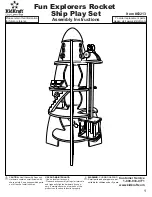
Instruction manual
RYAN
Item code: BH72
1) It is critical that your airplane be balanced correctly.
Improper balance will cause your plane to lose control
and crash.
THE CENTER OF GRAVITY IS LOCATED
100MM
BACK
FROM THE LEADING EDGE OF THE WING, AT THE FUSE-
LAGE. BALANCE A PLANE UPSIDE DOWN WITH THE FUEL
TANK EMPTY.
2) Mount the wing to the fuselage. Using a couple of
pieces of masking tape, place them on the top side of the
wing 100mm back from the leading edge, at the fuselage
sides.
3) Turn the airplane upside down. Place your fingers on
the masking tape and carefully lift the plane.
4) If the nose of the plane falls, the plane is nose heavy.
To correct this first move the battery pack further back in
the fuselage. If this is not possible or does not correct it,
stick small amounts of lead weight on the fuselage under
the horizontal stabilizer. If the tail of the plane falls, the
plane is tail heavy. To correct this, move the battery and
receiver forward or if this is not possible, stick weight into
the firewall. When balanced correctly, the airplane
should sit level or slightly nose down when you lift it up
with your fingers.
BALANCING
1) We highly recommend setting up a plane using the
control throws listed.
2) The control throws should be measured at the widest
point of each control surface.
3) Check to be sure the control surfaces move in the
correct directions.
●
Low rate:
●
Ailerons: 12 mm up 12 mm down
●
Flap: 25 mm down
●
Elevator: 10 mm up 10 mm down
●
Rudder: 30 mm right 30 mm left
●
Hight rate:
●
Ailerons: 14mm up 14mm down
●
Flap: 30mm down
●
Elevator: 13mm up 13mm down
●
Rudder: 40mm right 40mm left
CONTROL THROWS
CG
100mm
12 mm
12 mm
25 mm
10mm
10mm
30mm
30mm
Flap control
Aileron control
Elevator control
Rudder control
1) Completely charge your transmitter and receiver
batteries before your first day of flying.
2) Check every bolt and every glue joint in your plane to
ensure that everything is tight and well bonded.
3) Double check the balance of the airplane
4) Check the control surface
5) Check the receiver antenna. It should be fully extend-
ed and not coiled up inside the fuselage.
6) Properly balance the propeller.
PRE-FLIGHT CHECK
After you have balanced a plane on the C.G. You
should laterally balance it. Doing this will help the
airplane track straighter.
1) Turn the airplane upside down. Attach one loop of
heavy string to the engine crankshaft and one to the tail
wheel wire. With the wings level, carefully lift the
airplane by the string. This may require two people to
make it easier.
2) If one side of the wing fall, that side is heavier than
the opposite. Add small amounts of lead weight to the
bottom side of the lighter wing half's wing tip. Follow
this procedure until the wing stays level when you lift the
airplane.
LATERAL BALANCE
We wish you many safe and enjoyable flights with
your RYAN.
41







































